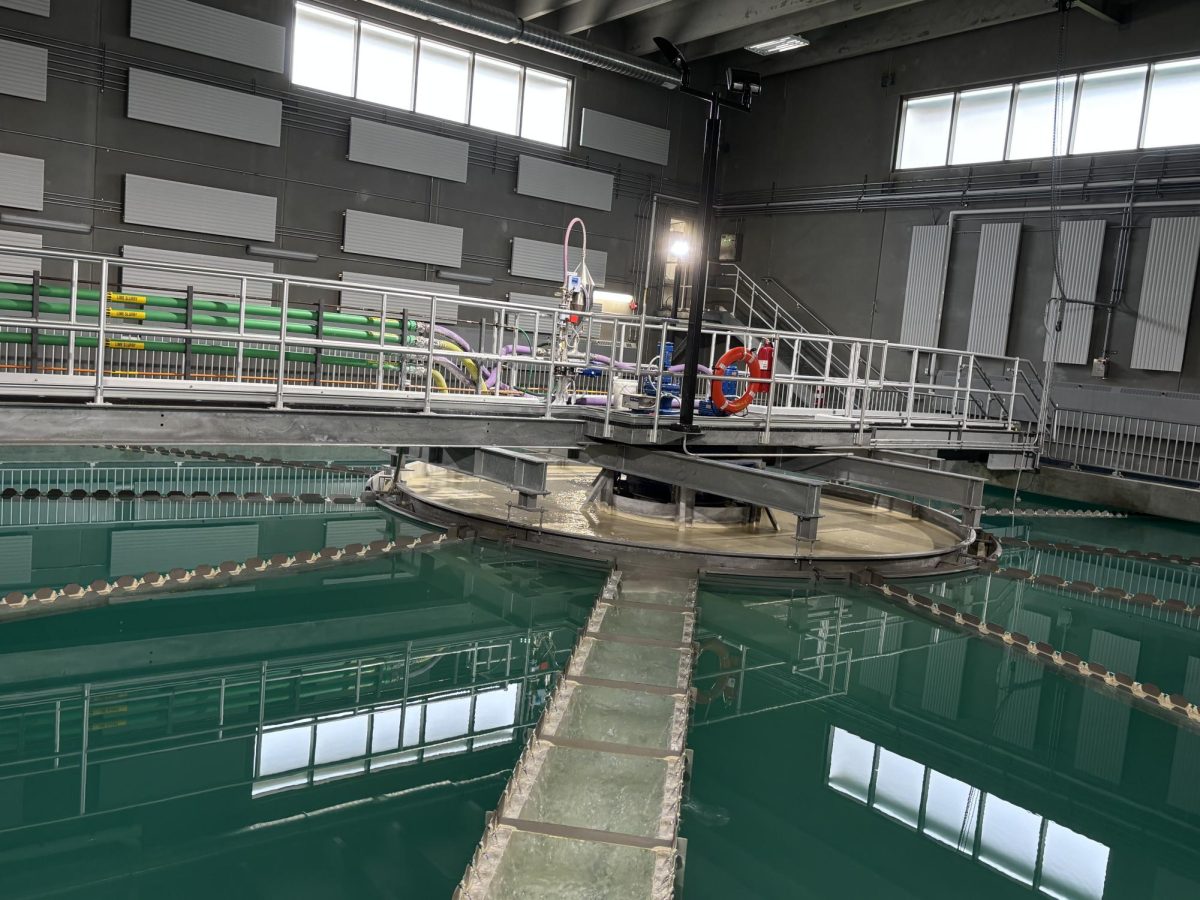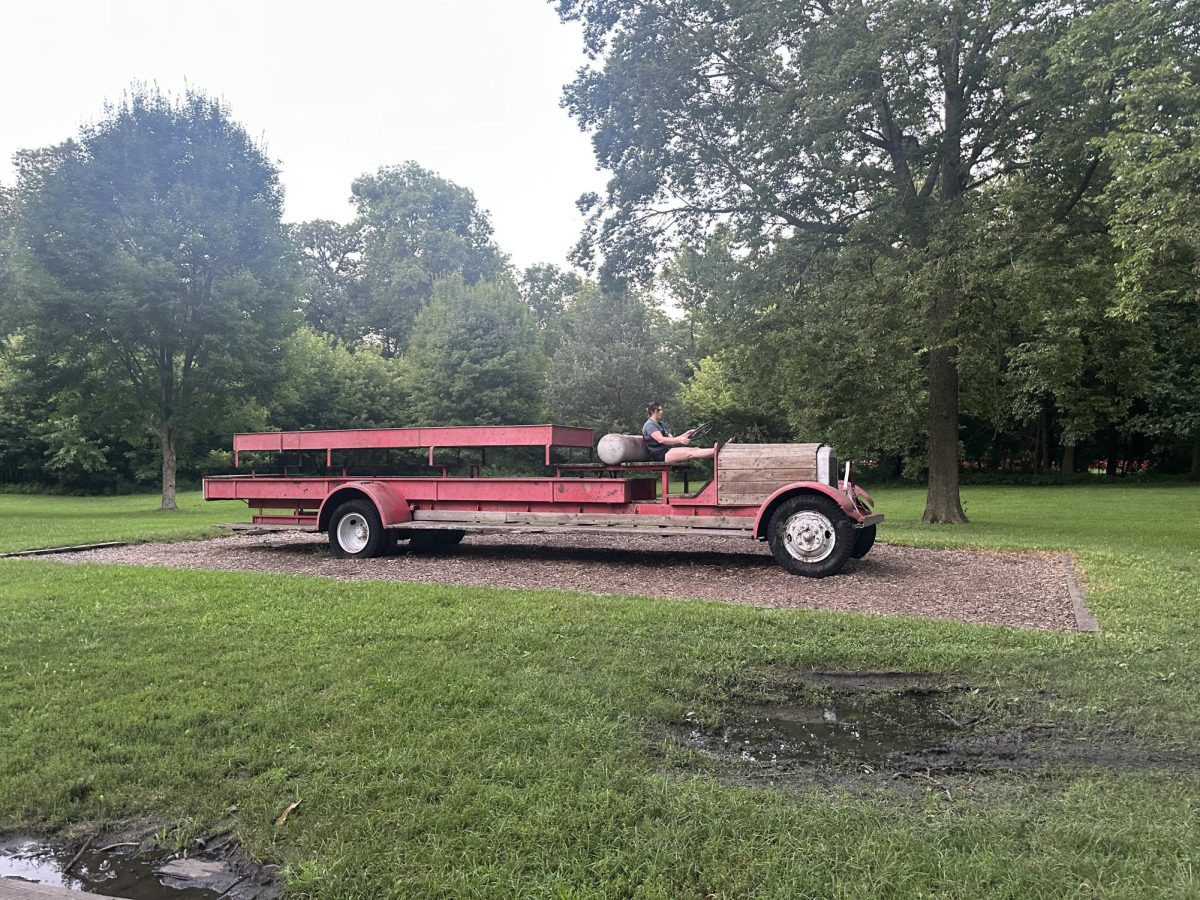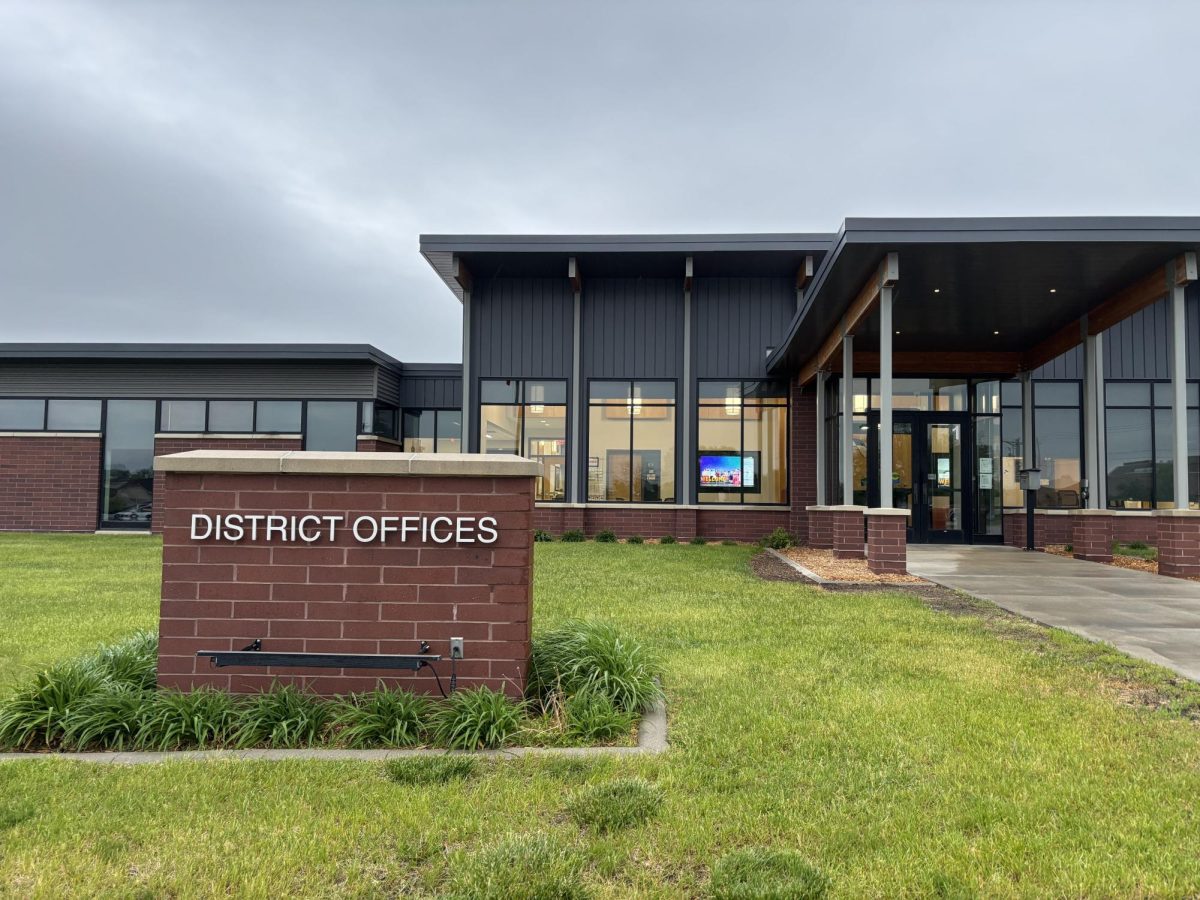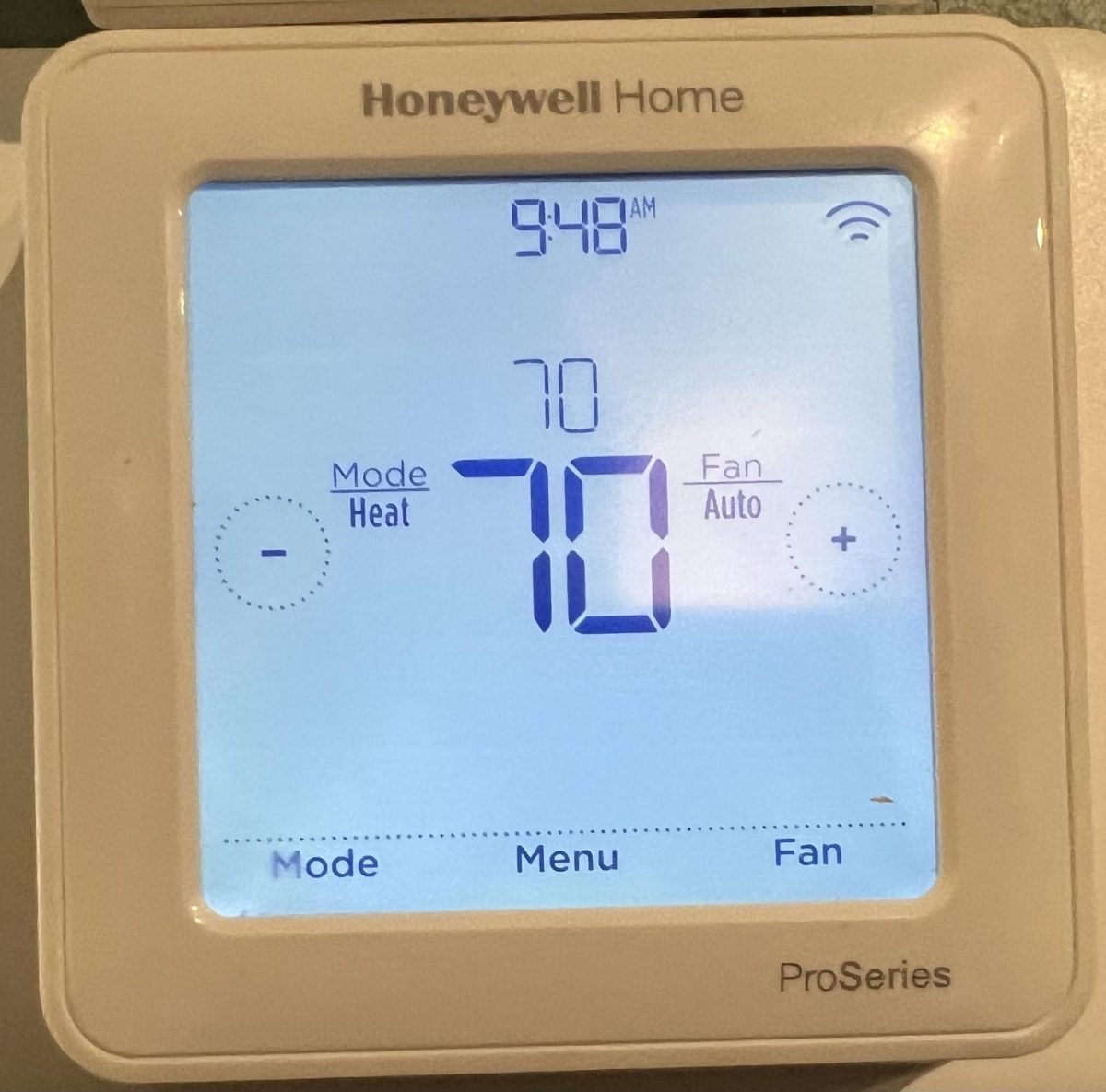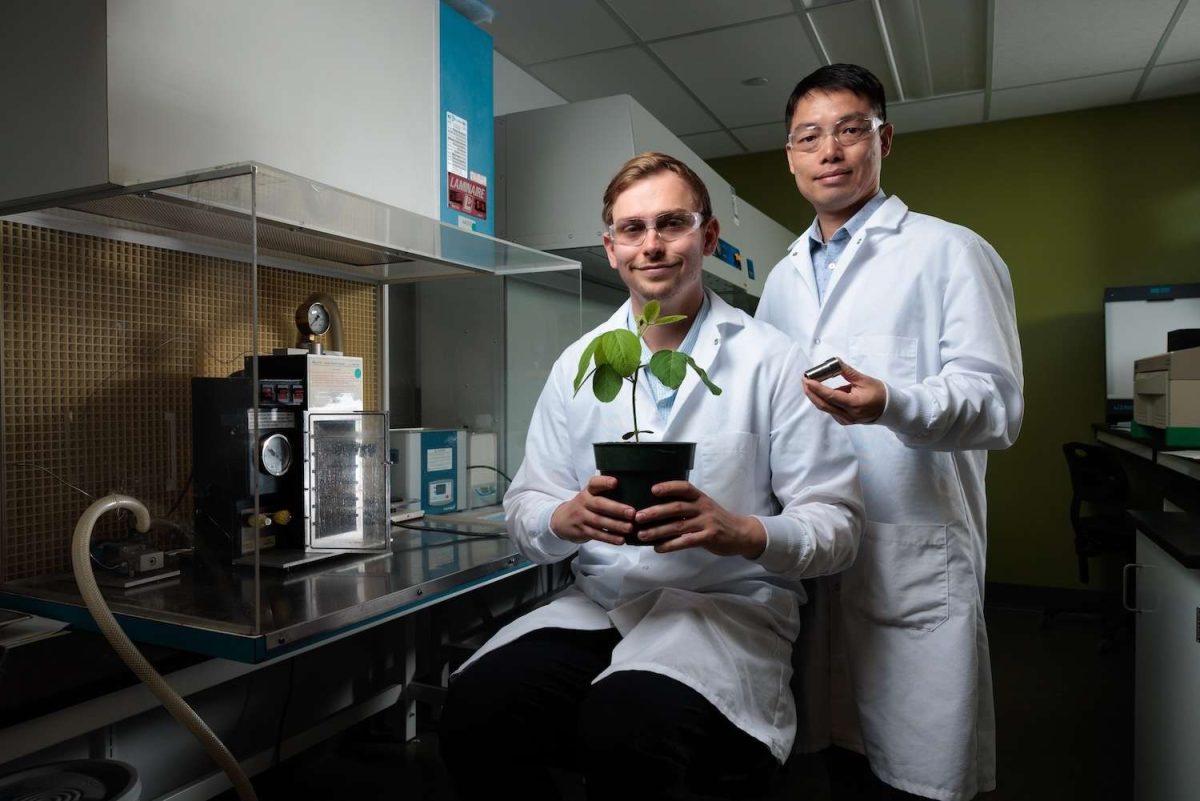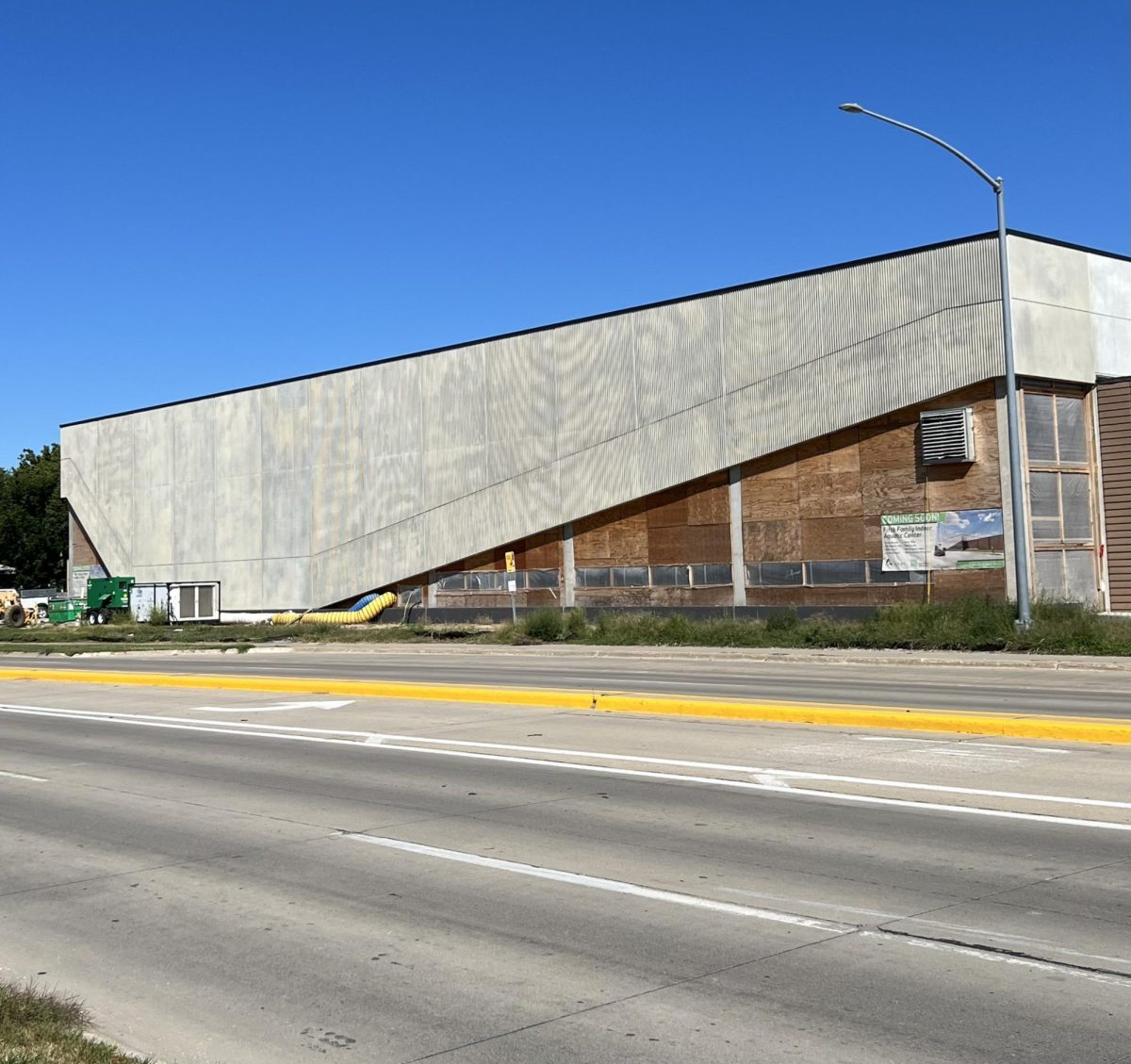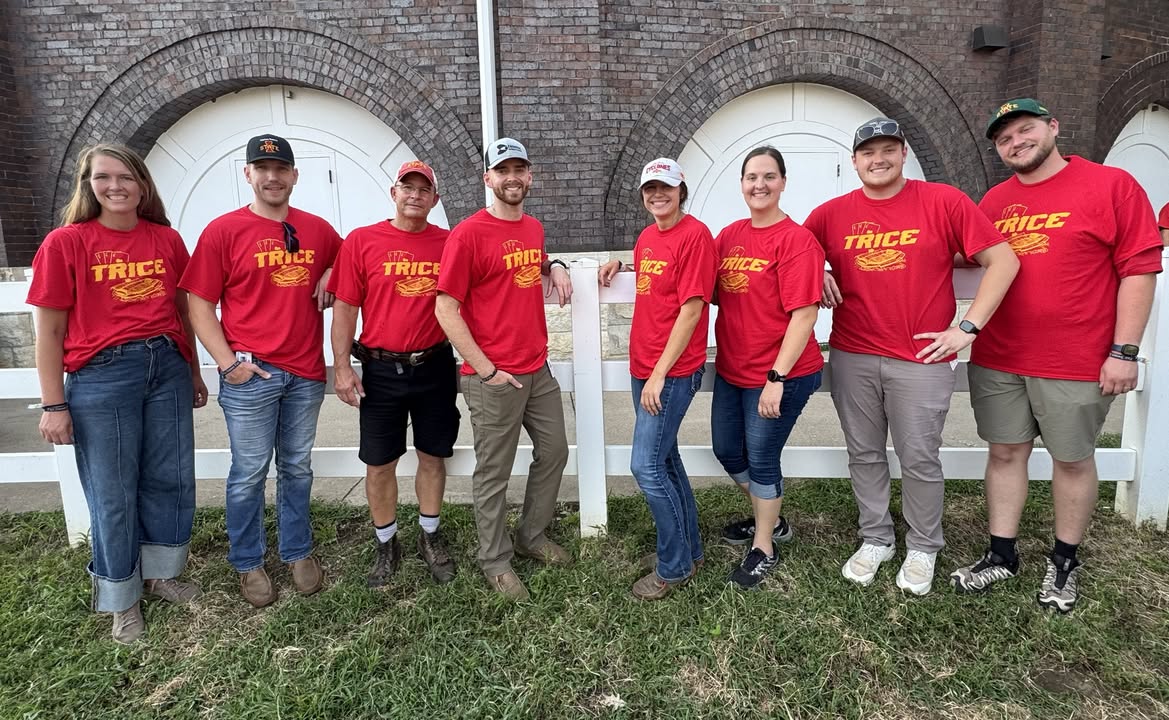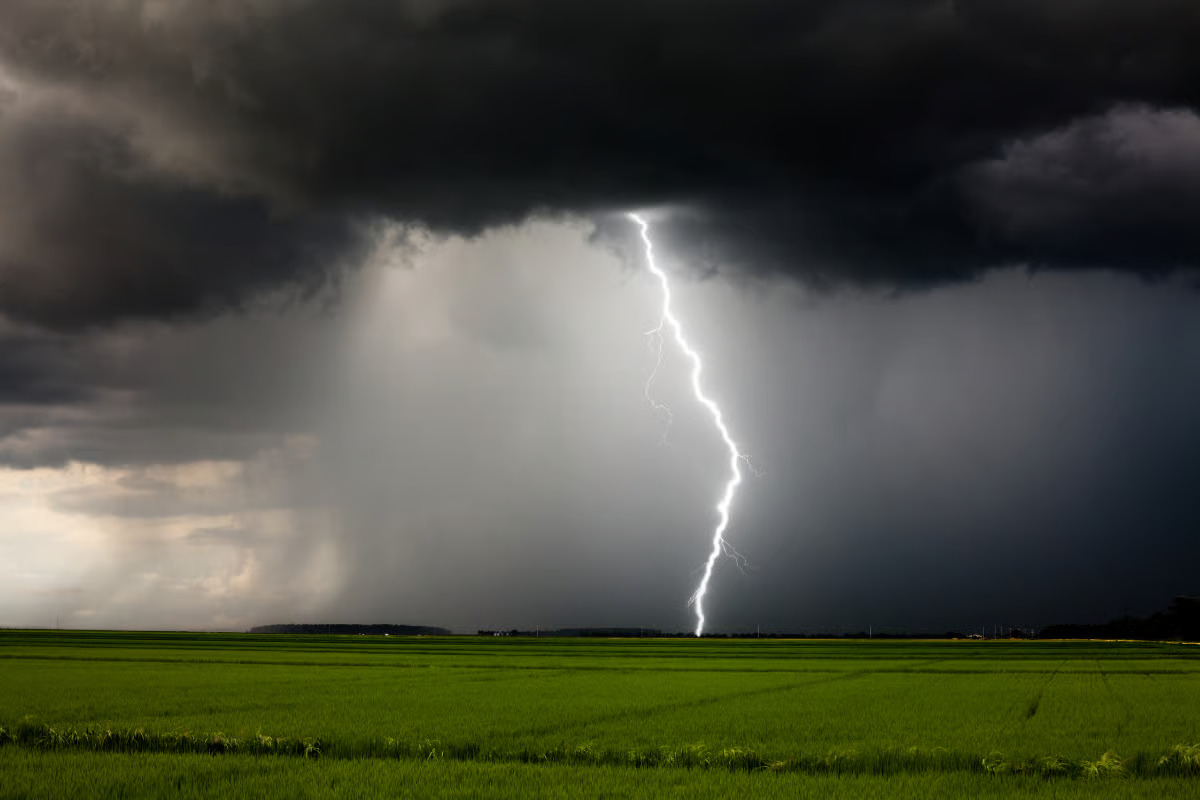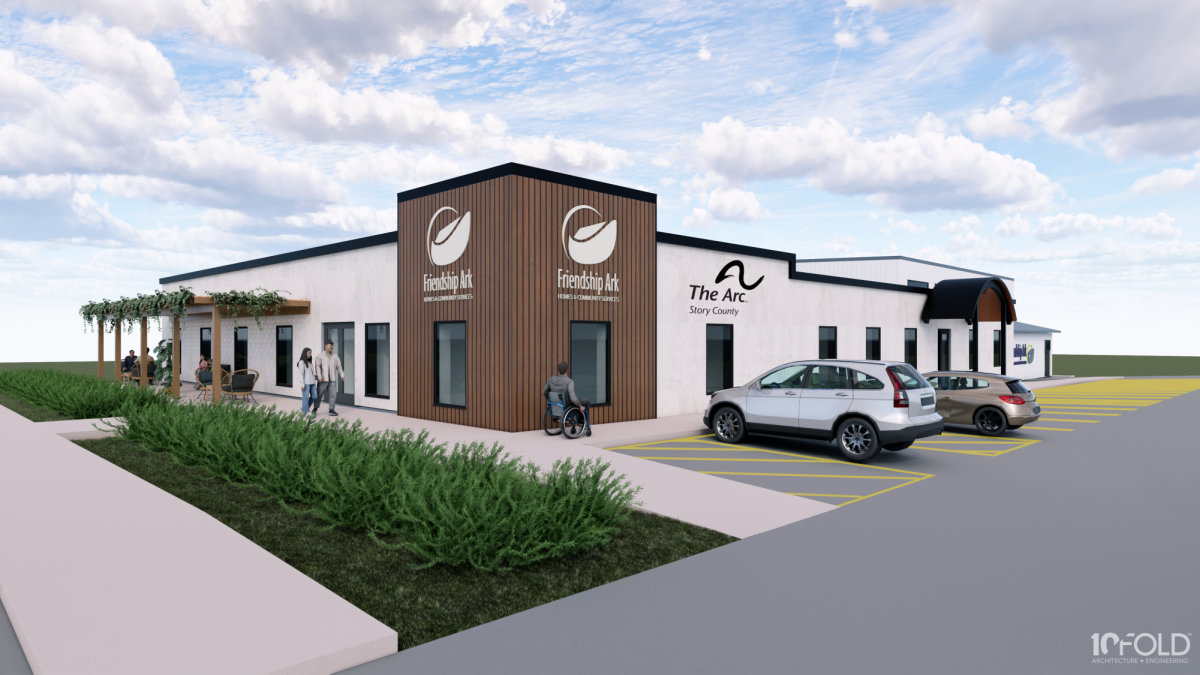As concerns of water quality in central Iowa rise, Ames residents do not need to worry about the safety of their great-tasting water supply.
High levels of nitrate were found in the water supply that comes from the Des Moines and Racoon rivers, leading to many central Iowa residents being part of a lawn-watering ban. Ames was not included in communities affected by the ban, but questions regarding water safety in the city have been raised.
“The drinking water in Ames meets and exceeds all of the state or the Safe Drinking Water Act requirements,” John Dunn, the water and pollution control director for the city of Ames, told the Voice. “So, based on the best knowledge that we’ve got about contaminants and health impacts, we’re far exceeding what that is.”
Water quality in central Iowa creates problems
Starting in early June, Central Iowa Water Works (CIWW) banned the use of water for watering lawns within several cities in central Iowa served by the agency. Plans to phase out the ban began in mid-July, and the ban was lifted in early August,
Several central Iowa communities, including most of Polk County, were among those impacted by the ban.
The ban came as water treatment facilities within CIWW neared the risk of violating federal nitrate standards, which allows a contaminant level for nitrate of 10 milligrams per liter, according to the Environmental Protection Agency’s National Primary Drinking Water Regulations.
Around 600,000 Iowans, not including those in Ames, were in the areas of concern.
“We are pulling all levers at our treatment facilities and nitrate removal processes to prevent a violation,” Tami Madsen, the executive director of CIWW, said in a June 13 news release. “Now we need full cooperation from the public. This is no longer a voluntary request.”
The water tested by CIWW has not violated the federal standards of nitrate contamination levels, meeting drinking standards according to the CIWW website.
The city of Ames hasn’t met the nitrate contamination maximum, instead, the city’s water has routinely tested less than the detection limit for nitrate, which is only 1 milligram per liter, according to the Drinking Water Quality Data webpage from the city.
“We’re fortunate here in Ames,” Dunn said. “The aquifer formation, not to dive too far into the chemistry, is a reducing environment.
“What enters the aquifer as nitrates gets converted to ammonia at the point where we’re pulling it out,” Dunn said. “It’s probably a biological activity that’s happening in the aquifer formation, but we see zero nitrates when we test; we’ve never been able to detect nitrates in our groundwater.”

What is nitrate and how does it get into the water supply?
Nitrate is a naturally occurring compound of nitrogen and oxygen found in the air, soil, water and even some foods, according to the EPA.
Nitrate is similar to nitrite, which chemically contains more oxygen than nitrate.
Plants and animals, including humans, thrive on nitrates: in fact, in agricultural practices, nitrogen-rich fertilizers such as manure are used for crops. In Iowa, this is a common practice for farmers.
Nitrate is also used in food preservation, pharmaceuticals and even explosives, according to the EPA.
However, too much nitrate in the water supply can be bad.
The nitrates used in agricultural practices run into streams and rivers as agricultural run-off, and at low levels, can be easily treated at water treatment plants. But, at higher levels, it poses risks for the health and safety of consumers.
The EPA began regulating nitrate levels in 1977 to prevent infant methemoglobinemia, or “blue baby syndrome” which is characterized by the bluish skin as a result of interference with the oxygen-carrying capacity of the blood.
Water treatment facilities are able to filter out nitrates at lower amounts. CIWW’s nitrate removal facility can treat 10 million gallons a day, exceeding the district’s normal demand of 70-80 million gallons.
Next to no nitrates in Ames water
The water in the city of Ames comes from 22 groundwater wells and is treated for contaminants such as lead, copper, bacteria, nitrates and nitrites at the Ames Water Treatment Plant, 1800 E. 13th St., which opened in 2017. The wells are individually tested each spring for contaminants.
Groundwater wells are located in downtown Ames, on the ISU campus, behind Walmart and Target on S. Duff Avenue, and near the Hunziker Youth Sports Complex. Two new wells are currently under construction in North River Valley Park.
“We know that they’re hydraulically connected to the river, because when the rivers come up, we see the groundwater table come up,” Dunn said. “But what we don’t see are nitrates coming through.”
It’s not just nitrates
Nitrates haven’t always been the only concern in Iowa’s water — in 2022, DNR testing found perfluoroalkyl and polyfluoroalkyl substances, commonly known as PFAS or “forever chemicals,” in the Ames water supply, according to a report from Iowa Capital Dispatch.
The PFAS were found to be local contaminants in a well located on the ISU campus. PFAS hasn’t been found in the Ames water supply since 2023, according to reports from the city.
“The city is fortunate to have a safe supply of drinking water, free from the presence of nitrate that some water utilities are currently dealing with,” the city’s Drinking Water Quality Data webpage says.
How does Ames treat its water?
Ames’ groundwater wells access water that passes through “remnants of ancient
riverbeds of Ioway Creek and the South Skunk River as they existed before the most recent glaciers changed the terrain,” according to the city’s 2025 Consumer Confidence Report.
Once the water enters the treatment facility, gases, like sulfur, are dissolved to remove bad taste and odor in cascade aerators.
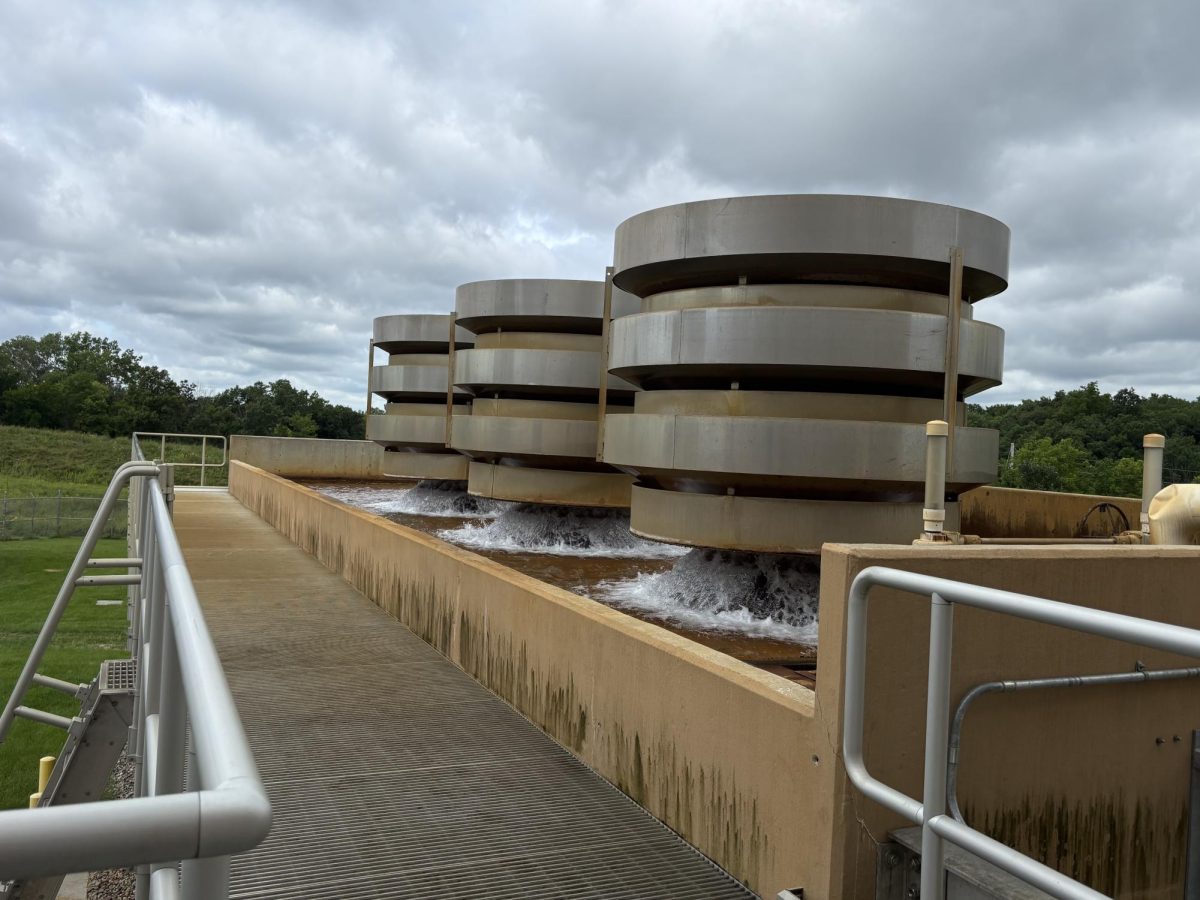
These aerators also naturally get rid of high levels of iron.
“Iowa groundwater tends to be high in iron,” Dunn explained on a tour of the facility. “So, what we’re doing is we’re oxidizing that iron.”
Chloride lime, a water softener, is then added to remove calcium and magnesium, which contribute to water hardness by forming solids in the form of sludge that can be easily removed and are often used as soil conditioner.
Chlorine is then added to disinfect the water and carbon dioxide gas is diffused into the water to raise the pH. Polyphosphate is then added to the water to stabilize the supply and prevent scale build-up in filters that removes the remaining particles that made it through the treatment process.
“If we don’t do that, then the solids will continue to settle out in the distribution system and in homeowners pipes,” Dunn said.
Before the award-winning Ames water comes to your home, fluoride is added for dental protection.
See what’s in our water and how much of it is there in the city’s 2025 Consumer Confidence Report.
The Ames Water Treatment Plant has about 6.5 million gallons that run through its pipes each day; in the summer that number rises because of outdoor water use, such as lawn watering, Dunn said.
Customers within Ames city limits, with a few exceptions in the northwestern part of the city, and Iowa State University are on the Ames water supply. Treated water is also sold to the Xenia Rural Water District.
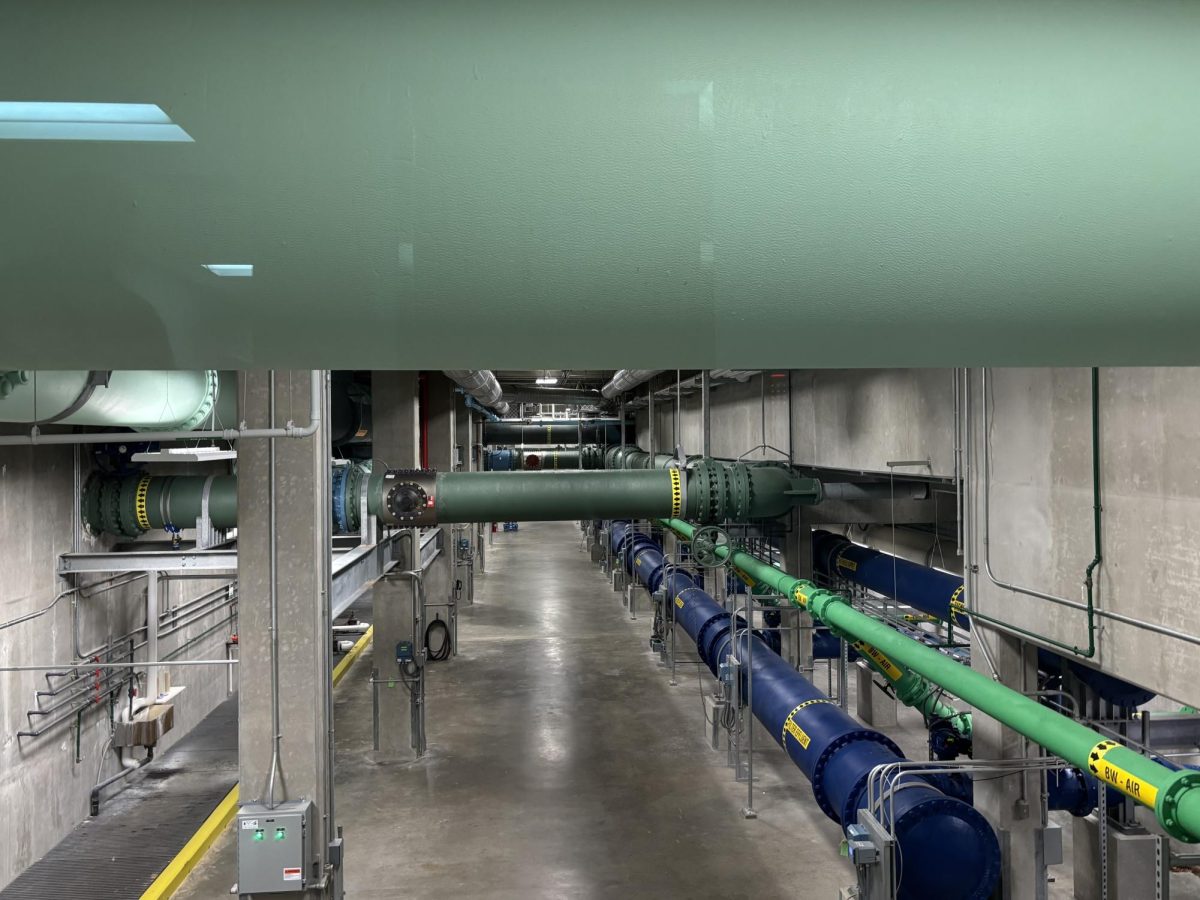
Ames water ranked the best tasting in Iowa in 2024
Ames continuously ranked among the top municipalities in Iowa with the best tasting water.
Most recently, Ames won the Iowa section of the American Water Works Association’s (AWWA) Best Tasting Water in Iowa and the People’s Choice Awards in 2024.
The best-tasting award is based on taste, clarity, aroma and after-taste, according to a 2024 release from Ames Water and Pollution Control.
Ames won the honor of Iowa’s best tasting water five times: 2001, 2007, 2017, 2018 and 2024.
“We feel Ames water is entirely deserving of the attention,” Dunn said in the 2024 release. “Ames residents have embraced and celebrated our great water for decades, and we feel tremendous pride in producing such a valued commodity.”
Ames went on to compete at the AWWA national conference in June and placed third; Denver won the honor of having the best tasting water in the country.
“We still claim we’re among the best tasting waters in North America,” Dunn said.
How Ames is working to reduce nitrate levels
The Ames Water Treatment Plant, with support from Ames City Council, is putting in about $100,000 into buffers and nitrifying bioreactors at the edges of farm fields where run-off high in nitrates first leeches into the water supply.
Dunn said about a dozen of those buffers and reactors are put in each year and that the city is putting about $500,000 into watershed-based nutrient reduction.
“There are thousands and thousands of them in the south Skunk River watershed that need to happen,” Dunn said. “So we need some help to move the needle.
The South Skunk River has detectable levels of nitrates from agricultural runoff as well as discharge from the Ames Water Pollution Control Facility. This facility is currently undergoing a $55 million project to reduce nitrogen discharge from the plant into the river by two thirds.
Dunn says treatment facilities can’t do it alone — mitigation needs to start where nitrates meet the water supply.
“It’s unreasonable to expect drinking water utilities to solve (nitrate issues) themselves,” Dunn said. “It’s got to be a watershed scale solution, and so that’s going to require every landowner in the watershed doing their part.”

